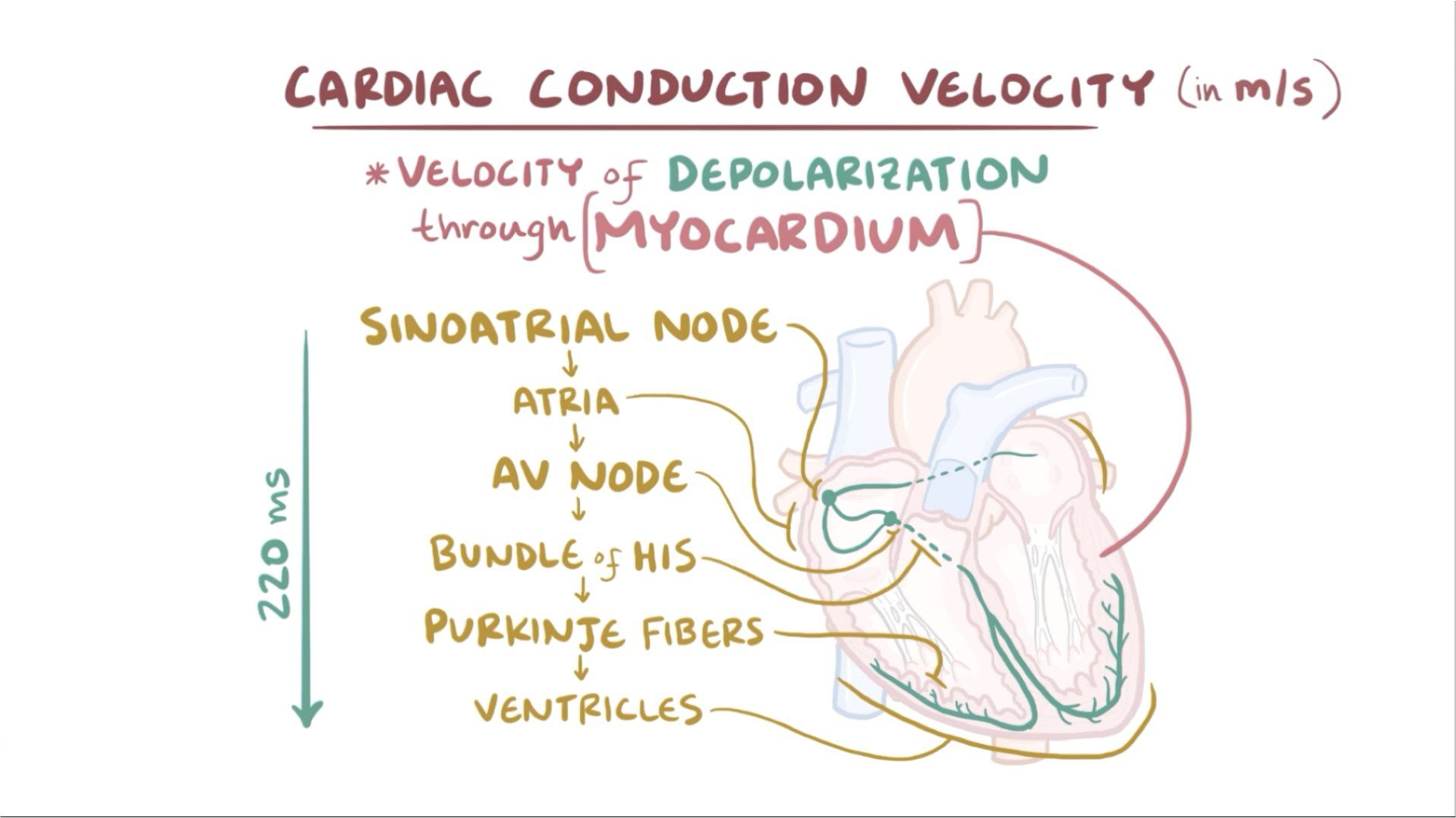A group of nursing students are studying the conduction system of the heart. The nursing students should recognize that the pacemaker of the heart is known as
The Correct Answer is {"dropdown-group-1":"C"}
The pacemaker of the heart is known as the sinoatrial (SA) node. The SA node is a specialized group of cells located in the right atrium of the heart. It generates electrical impulses that initiate each heartbeat and set the rhythm for the entire heart.

Nursing Test Bank
Naxlex Comprehensive Predictor Exams
Related Questions
Correct Answer is A
Explanation
A. The best time to perform a BSE is 4 to 7 days after the first day of the menstrual period:
This statement is correct. Performing BSE a few days after the menstrual period ensures that the breasts are less likely to be swollen or tender, which can make it easier to detect any unusual changes.
B. If she suspects that she is pregnant, then the woman should not perform a BSE until her baby is born:
This statement is incorrect. Pregnant women can still perform breast self-examinations. In fact, it's important for pregnant women to be aware of any changes in their breasts.
C. The best time to perform BSE is in the middle of the menstrual cycle:
This statement is not as accurate as the first choice. While it's true that performing BSE a few days after the menstrual period can be easier due to reduced breast tenderness, it doesn't necessarily mean the middle of the menstrual cycle for every woman. The timing can vary based on an individual's menstrual cycle.
D. The woman needs to perform BSE only bimonthly unless she has fibrocystic breast tissue:
This statement is incorrect. Regular monthly breast self-examinations are recommended for all women, regardless of whether they have fibrocystic breast tissue or not. Detecting changes early is crucial for breast health.
Correct Answer is A
Explanation
A. Maxillary sinusitis:
Explanation: The client's symptoms of facial pain, fever, malaise, swollen turbinates, purulent nasal discharge, and dull, throbbing pain in the cheeks and teeth on the right side, especially when palpated, are indicative of maxillary sinusitis. Maxillary sinusitis refers to the inflammation of the maxillary sinuses, which are located in the cheek area. The symptoms described align with a bacterial infection in this sinus.
B. Nasal polyps:
Explanation: Nasal polyps are soft, noncancerous growths on the lining of the nasal passages or sinuses. While they can cause nasal congestion and a runny nose, they do not typically present with the specific symptoms mentioned in the scenario, such as facial pain, fever, and purulent discharge.
C. Frontal sinusitis:
Explanation: Frontal sinusitis involves inflammation of the frontal sinuses located in the forehead area. Symptoms may include forehead pain, headache, and nasal discharge. However, the described symptoms in the scenario (dull, throbbing pain in the cheeks and teeth on the right side) are more characteristic of maxillary sinusitis.
D. Posterior epistaxis:
Explanation: Posterior epistaxis refers to a nosebleed that originates from the back of the nose, often due to bleeding from the sphenopalatine artery. While nosebleeds can cause blood drainage into the throat and result in a metallic taste, the other symptoms described in the scenario, such as facial pain, fever, and purulent discharge, are not indicative of posterior epistaxis.
Whether you are a student looking to ace your exams or a practicing nurse seeking to enhance your expertise , our nursing education contents will empower you with the confidence and competence to make a difference in the lives of patients and become a respected leader in the healthcare field.
Visit Naxlex, invest in your future and unlock endless possibilities with our unparalleled nursing education contents today
Report Wrong Answer on the Current Question
Do you disagree with the answer? If yes, what is your expected answer? Explain.
Kindly be descriptive with the issue you are facing.
